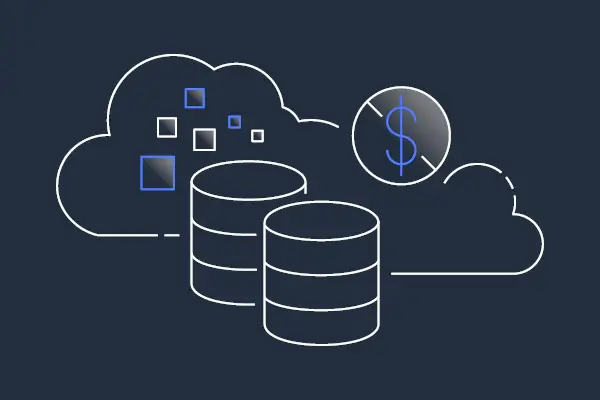· Jay Smith · cloud · 8 min read
The Evolution of AWS - From a Simple Storage Service to a Cloud Computing Giant
Learn about AWS groundbreaking cloud solutions, services, and how businesses of all sizes are leveraging AWS for unparalleled scalability and innovation.

Amazon Web Services (AWS) is undoubtedly the leading provider of cloud computing. Developed and operated by Amazon AWS offers a range of services with, over 200 featured options available from data centers located across different regions globally. From computing and databases to storage, networking, analytics, machine learning, IoT, security and more AWS provides an widely adopted solution for cloud needs.
The impact of AWS on organizations access to IT resources like servers and storage has been revolutionary. By implementing a pay-as-you-go model that allows users to pay for what they use AWS has eliminated the need for significant initial investments. This scalability has empowered businesses of all sizes to expand their IT infrastructure without burdens. It’s no surprise that AWS now serves millions of customers spanning from startups with potential to corporations and government entities. Lets dive deeper into what makes AWS such a part of todays landscape.
Understanding AWS
Amazon Web Services (AWS) encompasses the on demand cloud computing platforms and APIs provided by Amazon for individuals, companies and governments alike. Through AWS organizations can conveniently access functionalities over the cloud including servers, storage options,databases,networking capabilities and other tools necessary, for analytics,machine learning and more.
Some of the services provided by AWS include;
Compute services such, as EC2 and serverless Lambda for deploying and running applications.
Storage services like S3 and EBS for data storage and archiving purposes.
Database services like RDS and DynamoDB for storing, managing and querying data.
Networking services like VPC and Route 53 for cloud based networking solutions.
Analytics services such as EMR and Athena to perform data analytics.
Security services like IAM and KMS that focus on access control and encryption.
Machine learning services like SageMaker and Comprehend designed specifically for ML models.
Management tools such as CloudWatch and CloudFormation that assist in governance tasks.
Content delivery services like CloudFront to ensure fast content delivery.
By leveraging these AWS offerings organizations can host their websites deploy applications, store amounts of data analyze data sets, train machine learning models monitor IT resources effectively among other capabilities in the cloud.
Benefits of AWS
The appeal of AWS lies in its benefits for enterprises;
Cost effectiveness
One major advantage is that it eliminates the need to invest in data centers or servers. With a pay as you go pricing model you only pay for the resources you actually use. This leads to cost savings on capital expenditure while minimizing waste.
Scalability
AWS provides scalability options based on demand. You can effortlessly scale up or, down your resources as needed. Automated provisioning of resources such, as storage, instances and databases ensures that your workload can adapt to meet the demands of peak times while maintaining performance.
Reliability
A feature of AWS architectures. Through redundancy and data replication across its data centers high availability is guaranteed. In case of any failures, disaster recovery and rapid failover mechanisms ensure business continuity.
Flexibility
Offered by AWS is unparalleled. With over 200 services available you have the freedom to mix and match databases, tools, applications and more to meet your requirements.
Global Reach
AWSs global reach spans across 25 regions with 84 availability zones. This extensive network ensures that your applications are located near users resulting in latency.
AWS Use Cases
Websites and Web Apps: Well known platforms like Netflix, Reddit and Adobe rely on AWS for hosting their sites. The range of services provided by AWS caters to their infrastructure needs.
Application Development: Developers benefit from the resources offered by AWS as they can rapidly build deploy and scale applications of all types.
Data Storage: With durable storage options, like S3 (Simple Storage Service) and EBS (Elastic Block Store) AWS ensures the availability of any amount of data you may have.
Big Data Analytics: Tools such as EMR, Athena and QuickSight empower organizations to process amounts of data and gain insights for their business.
Internet of Things: Services like IoT Core and Greengrass make it easy for businesses to manage their devices and the data they generate.
Machine Learning: SageMaker provides a range of machine learning models while Comprehend and Translate handle text analysis and language translation tasks.
These are just a few examples of how AWS enables organizations to harness the power of the cloud for any imaginable use case.
How AWS Works
Behind the scenes AWS operates a network of secure data centers where customers can deploy their resources and applications. The key concepts involved are;
Regions: These are locations worldwide where AWS clusters its data centers. Currently there are 25 regions in locations such as the US, Europe, Australia and more.
Availability Zones: Each region consists of data centers known as Availability Zones (AZs) providing redundancy in case one zone experiences issues or failures.
Edge Locations: These smaller scale data centers are strategically placed to deliver content. They play a role in services like CloudFront that focus on content delivery.
When deploying an application, on AWS you have the flexibility to choose the region(s) and availability zone(s) where your resources will be hosted. You can opt for servers known as EC2 instances or container based deployments. Depending on your requirements you can configure options related to processing power storage capacity, networking capabilities among others.
There are redundancies, in regions and zones to ensure high reliability and uptime. When using AWS you can focus on managing the resources through user APIs and dashboards while AWS takes care of the underlying infrastructure. The distributed nature of AWS allows for latency worldwide.
Learning AWS
While AWS offers a range of services it does require some time and effort to learn how to use them. Here are some tips to help you get started;
Take advantage of the documentation provided by AWS, which includes guides and resources for each service.
Consider participating in instructor led classes or self paced digital courses offered by AWS Training to develop your expertise.
Obtaining an AWS Certification is a great way to validate your cloud skills through role based certifications.
Take advantage of the opportunity to try out services hands on through the free access granted by AWS Free Tier allowing you to test workloads without cost.
Engage with the active community in the AWS Forums where you can ask questions and receive answers from fellow users.
Although many aspects of using AWS are highly automated having programming knowledge will unlock its potential. It is also beneficial to have familiarity with concepts such as virtualization, networking, storage and databases. With persistence and practice independent learning of AWS is definitely achievable.
Success Stories and Case Studies
To truly understand how impactful AWS can be for businesses, it’s worth exploring success stories that showcase its transformative capabilities.
Netflix, The popular streaming platform migrated fully to AWS in 2016. AWS now handles billions of streaming hours per month for Netflix.
Philips, a health technology company has utilized AWS machine learning to create devices and applications powered by intelligence.
3M, The multinational conglomerate uses AWS IoT Core service to streamline operations and boost efficiency across factories.
Hundreds of thousands of businesses trust AWS today. Its scalability, resilience, and pace of innovation create endless possibilities.
AWS Ecosystem and Partners
The AWS Partner Network (APN) is comprised of an array of software vendors consulting partners and systems integrators who contribute value added tools and services that seamlessly integrate with AWS.
Notable APN Technology Partners include:
Datadog - Monitoring and analytics platform
Splunk - Log management and data analytics
Atlassian - Project tracking tools like JIRA
HashiCorp - Infrastructure automation tools
These partners significantly augment the capabilities of AWS for customers. Their solutions interoperate seamlessly with AWS services to deliver powerful outcomes spanning DevOps, security, compliance, and governance.
The Future of AWS
Moving forward there are trends that will have a significant impact, on the future of AWS;
AWS plans to expand its global infrastructure by introducing new regions and availability zones aiming to reach even more customers worldwide.
They are dedicated to releasing cutting edge services that leverage technologies such as quantum computing and blockchain ensuring they stay at the forefront of advancements.
Deeper collaborations and integrations with platforms like Microsoft and VMware will be a priority for AWS fostering connections and interoperability.
AWS is also focusing on providing industry solutions tailored for sectors like healthcare, finance and media addressing their requirements effectively.
With continued advancements in AI capabilities AWS aims to offer machine learning solutions that empower customers with enhanced predictive analytics and automation.
Recognizing the importance of low latency applications AWS is investing in enhanced edge computing solutions for response times closer to end users.
Conclusion
The pace at which AWS is innovating is truly impressive. They have already revolutionized cloud computing. and show no signs of slowing down. Their commitment to flexibility, efficiency and innovation has made them the go to choice for businesses when it comes to computing power, storage options, analytics tools, machine learning capabilities well as security features. With technologies on the horizon there’s no doubt that AWS will continue leading the way, in shaping the future of cloud computing.
If you are an individual or a company aiming to harness the potential of cloud computing AWS offers a developed, dependable and comprehensive platform. Whether you are a startup creating web applications a corporation transitioning systems or a business striving for enhanced effectiveness discover how AWS can revolutionize your technological requirements, consider joining forces with God Particle IT Group to help take your IT infrastructure to the next level. Contact Us today!




